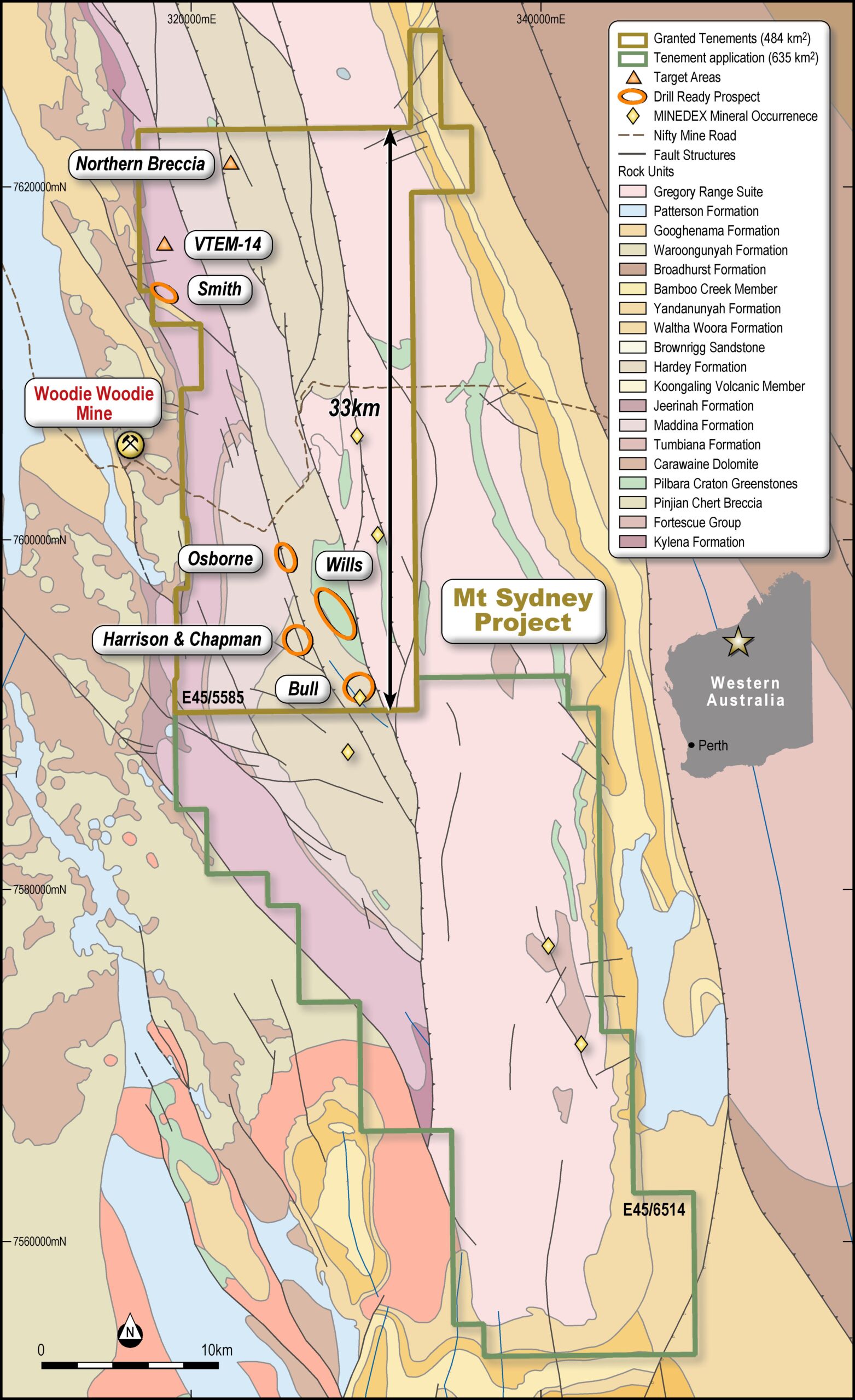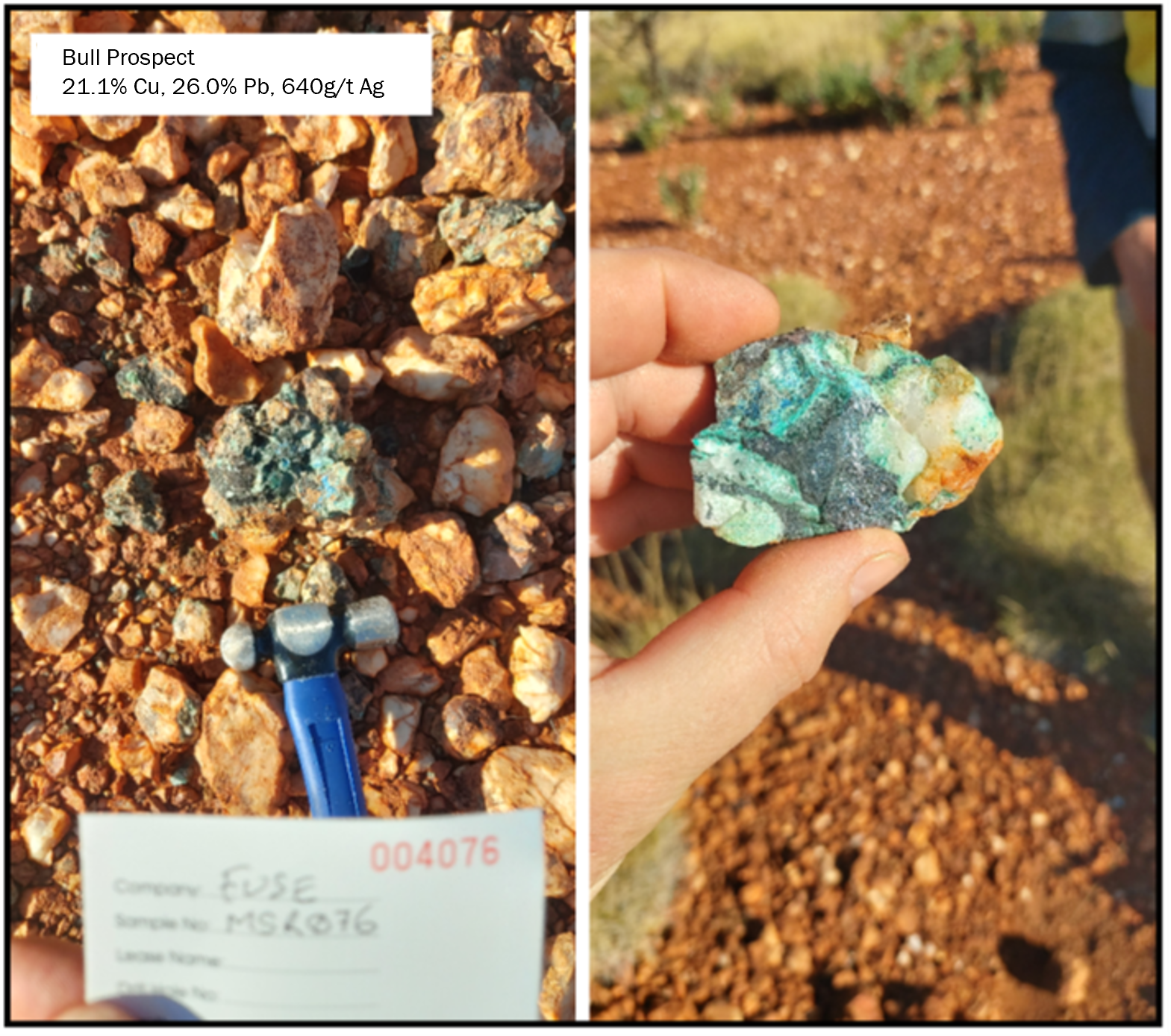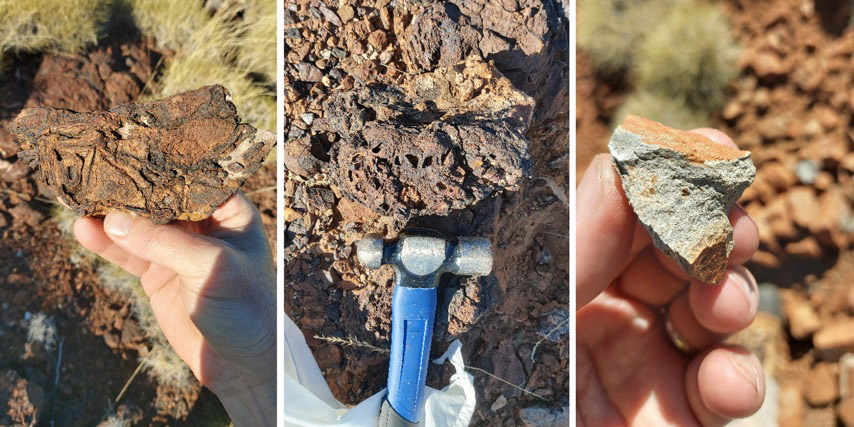Fortuitously located in Western Australia between the Nifty, Woodie Woodie, Telfer, Havieron, and Winu. This is an area well recognised and tenure is secure. Access to tenure is typically through acquisition or earn-in. Fuse’s tenure represents a significant landholding of 1,119km², with 484km² as a granted exploration licence and 635km² under application.

Positioned next door to Cyprium (ASX:CYM) Nifty Mine – the Nifty Copper Deposit and Maroochydore Deposit to the southwest combine for resources of >1.4 Mt of Copper. Representing one of the largest copper development projects in Australia.
New tenure very difficult to obtain – with surrounding deposits such as Nifty, Woodie Woodie, Telfer, Havieron, and Winu. This is an area well recognised and tenure is secure. Access to tenure is typically through acquisition or earn-in.
Application submitted – for an additional 635km² of highly prospective exploration area south of Mt Sydney.
Recent assays have confirmed high-grade base metal rock chip sampling, delivering up to 21.10% Copper (Cu), 27.20% Lead (Pb), 0.43% Zinc (Zn) and 640 g/t Silver (Ag).
Reconnaissance of VTEM anomalies discovered two new gossanous areas, Harrison Prospect and Chapman Prospect, both indicative of a VHMS style mineralisation, while another gossanous sample on the western side of the Antiform Gabbro magmatic sulphide target, at Wills Prospect, returned 6.07% Cu and 0.15% Ni.
Base metal anomalous rock chips are associated with limestones and correlate with a conductor at Smith Prospect; while multiple areas of polymetallic base metal bearing quartz veining have been identified for follow up across the project area.
Lead bearing breccia and polymetallic veining has been identified in the north of the tenement along with gossanous float grading up to 0.15% Cu. These areas remain to be systematically investigated.




